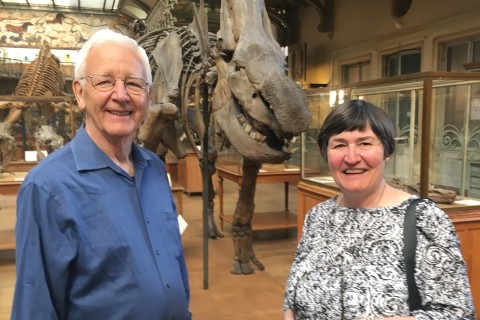Lights, camera, teach
In this column I usually write about a television show or a movie that I’ve watched from the comfort of my couch or in a movie theater. Other people have always created the experiences that I watch, discuss, and critique. But recently I flipped the formula: I spent time in front of the camera as part of videotaping an online class.
The last thing that the team and I filmed for the online course was the introduction. Though I’d been fairly comfortable adapting my course material for the online version, videotaping the introduction left me floundering.
The studio crew told me that this was a common experience. We teachers are used to “performing” our courses, I realized, but we’re not used to stepping in front of a camera, smiling at nobody, and using our own names. I found the camera to be an odd stand-in for human beings, and I had to learn to bridge the distance between me and the unknown students who would see the lectures. We had to film “Hi, I’m Beth Jones” several times before I got past the strangeness.



